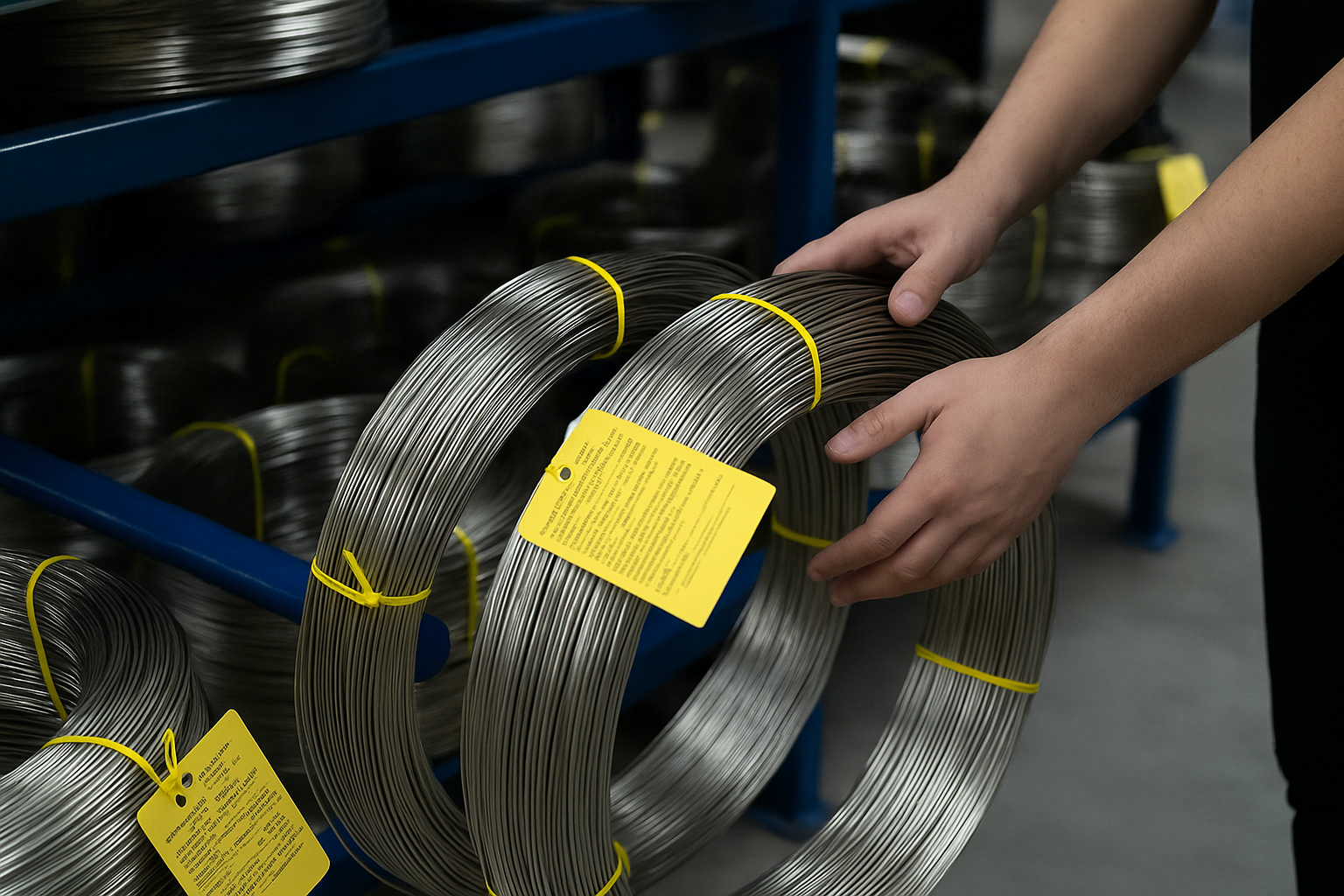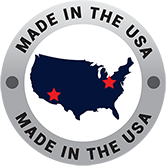MIMS Thermocouples: Performance, Materials, and the CEL Approach
What Are MIMS Thermocouples?
A MIMS thermocouple—short for Mineral Insulated Metal Sheathed thermocouple—is a robust temperature sensor designed to withstand extreme industrial environments. Unlike bare wire thermocouples, MIMS thermocouples encase the sensing elements inside a metal sheath packed with magnesium oxide (MgO) insulation. This design protects the wires from oxidation, mechanical damage, and chemical contamination while preserving signal accuracy.
Key Components of a MIMS Thermocouple:
- Thermocouple wires (Type K, N, S, etc.): Two dissimilar metals joined at a sensing junction.
- Magnesium Oxide (MgO): A dense, ceramic powder that electrically insulates the wires while conducting heat effectively.
- Metal sheath: The outer layer that shields the assembly from the environment. Common materials include Inconel® 600, 310 stainless steel, Hastelloy®, and platinum.
The result is a compact, durable sensor capable of accurate readings at temperatures exceeding 1000°C, with excellent resistance to vibration and corrosion.
MIMS thermocouples are widely used in aerospace, metal processing, power generation, and heat treatment, where standard thermocouples would degrade or fail prematurely.

Why Sheath Material Matters in MIMS Design
While the basic structure of a MIMS thermocouple is straightforward, sheath material selection is one of the most critical decisions in the design process. The sheath directly affects the thermocouple’s temperature range, oxidation resistance, mechanical stability, and electromotive force (emf) drift over time.
Traditionally, MIMS thermocouples use materials like Inconel® 600 or AISI 300/310 stainless steel. These perform well in many applications—but as temperatures exceed 1000°C, their limitations become clear:
Common Failures at High Temperatures:
- Thermal Drift: Above 1050°C, thermoelements—especially Type K—become thermoelectrically unstable. Inconel sheaths do little to prevent this drift.
- Mechanical Stress: Dissimilar thermal expansion between sheath and element wires creates mechanical strain, especially during thermal cycling. This can cause wire breakage or junction failure, particularly in the negative leg of Type K.
- Contamination: Elements like aluminum and manganese may vapor-migrate through MgO insulation, react with the sheath, and alter emf characteristics.
To solve these issues, materials engineers have explored sheath designs that form a thermally and chemically compatible system with the thermoelement wires. One example is the Nicrobell® approach, which introduced specially formulated alloys (e.g., Nicrobell B and C) using Nickel-Chromium-Magnesium-Niobium blends to enhance oxidation resistance and stability with Type N thermocouples.
The core principle: The sheath is not just a passive barrier—it must function in harmony with the thermoelement to minimize drift, extend lifespan, and ensure accurate measurements.
CEL’s Materials Engineering Approach
At Cleveland Electric Laboratories (CEL), we believe high-performance MIMS thermocouples begin with smart materials engineering. While legacy designs often rely on off-the-shelf sheathing, CEL takes an application-specific approach—customizing sheath, insulation, and thermoelement pairings to optimize performance.
Sheath Options for Real-World Demands
- CEL offers a wide range of sheath materials, selected based on:
- Operating temperature
- Atmospheric exposure (oxidizing, reducing, carburizing, nitriding)
- Thermal cycling conditions
- Mechanical stress and vibration levels
Common options include:
- Inconel® 600 – A general-purpose alloy for high-temperature oxidizing environments
- 310 & 316 Stainless Steel – For corrosive or mildly reducing conditions
- Hastelloy® – Suited for aggressive chemical environments
- Platinum & Platinum-Rhodium – For extreme temperatures (up to 1600°C)
- Alumina or Sapphire Tubes – Used in hybrid or high-purity applications
For ultra-high temperature stability (e.g., aerospace testing, heat treatment, metal refining), CEL offers Type N thermoelements sheathed in high-stability alloys—an approach similar to Nicrobell, now mirrored by Pyrosil D.
Custom Pairing for Compatibility
CEL engineers don’t treat sheath and thermoelements as isolated components. Instead, we evaluate the thermocouple as a unified system, ensuring:
- Matched thermal expansion rates to reduce mechanical stress
- Minimal chemical reactivity between sheath and elements
- Stable emf performance across long-term thermal exposure
From 600°C to 1300°C and beyond, CEL delivers solutions that minimize drift, prevent premature failure, and ensure consistent accuracy.
Performance Factors: Drift, Expansion, and Contamination
Even in well-designed MIMS thermocouples, prolonged exposure to high temperatures can cause physical and chemical interactions that degrade accuracy. CEL proactively addresses the three most common failure modes through advanced design and precise manufacturing.
Key Performance Risks and CEL’s Mitigation Strategies:
| Risk Factor | Problem in Standard Designs | CEL’s Mitigation Strategy |
|---|---|---|
| Thermoelectric Drift | Type K becomes unstable above 1050°C, resulting in emf errors. | Uses Type N with ISO 17025-accredited calibration for high-temp stability. |
| Thermal Expansion Mismatch | Mismatched materials cause strain and junction failure. | Selects sheath/element alloys with matched expansion (e.g., N-clad-N). |
| Contamination via MgO | Vapor migration of Al and Mn alters emf output. | Employs low-impurity MgO and contamination-free sheaths (no Al/Mn). |
Industry studies (e.g., Bentley & Morgan, 1986) show that drift and instability can emerge within hours of exceeding material limits—causing quality issues, process deviations, and safety concerns.
CEL’s engineering process addresses these risks from material selection to welding and final testing.
Why MIMS Thermocouples Are the Smart Choice — and Where CEL Excels
In high-stakes applications—whether in vacuum furnaces, jet engines, or power turbines—temperature accuracy and sensor durability are essential. MIMS thermocouples offer:
- Superior insulation against oxidation, vibration, and contamination
- Long-term measurement stability
- Custom junctions for response speed, EMI resistance, or signal isolation
- Mechanical strength under pressure and thermal cycling
At Cleveland Electric Laboratories, we don’t just build MIMS thermocouples — we engineer them to outperform.
With over a century of sensor innovation, CEL offers:
- Material-matched thermocouple construction
- Full support for Type K, N, S, R, and B
- ISO/IEC 17025-accredited calibration for regulatory and process compliance
- Industry expertise across aerospace, metals, energy, and research sectors
Whether you’re upgrading from platinum assemblies, retrofitting aging equipment, or engineering a new high-temperature process, CEL delivers customized, reliable, and field-proven thermocouple solutions.



